Researchers built a power saw with sharks’ teeth for blades, for science
Recently, a group of US researchers glued shark teeth to power saws, creating a terrifying tool that could find a home in just about any horror movie. But this wasn’t another veiled attempt to top Steven Spielberg’s Jaws, just scientists trying to understand how sharks catch and devour their prey; the goal was to test which species of shark has the best-cutting teeth.
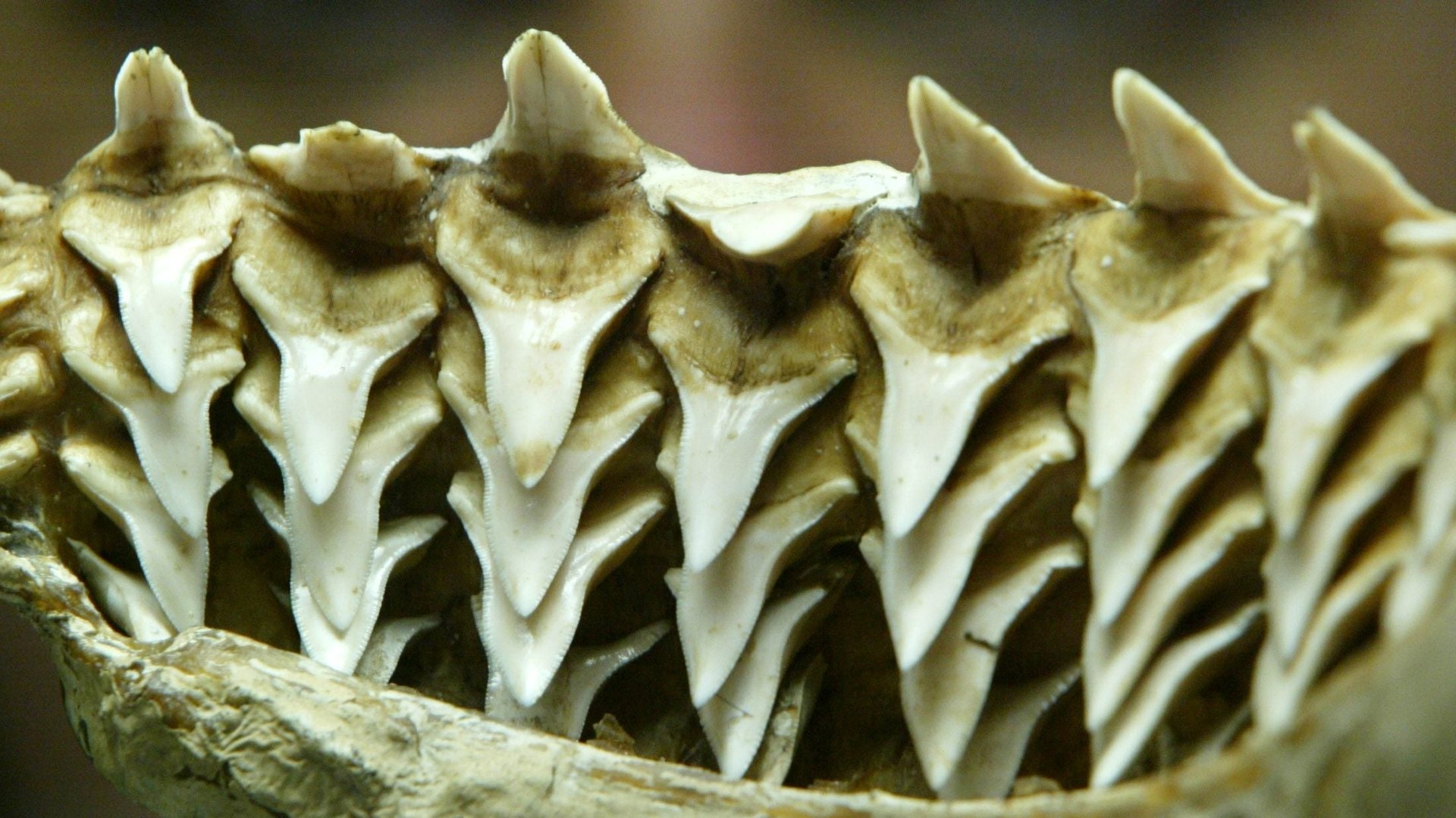

Recently, a group of US researchers glued shark teeth to power saws, creating a terrifying tool that could find a home in just about any horror movie. But this wasn’t another veiled attempt to top Steven Spielberg’s Jaws, just scientists trying to understand how sharks catch and devour their prey; the goal was to test which species of shark has the best-cutting teeth.
Their results, published (along with the blueprint of the epic shark-saw) August 10 in Royal Society Open Science, suggest the cutting ability of shark teeth varies among species depending on their diet and habitat.
The shark-saw experiment was simple. First, the researchers chose shark species with very distinctively shaped teeth. Silky and sandbar sharks (two species in the in the Carcharhinus genus, counted as one for purposes of testing) boast triangular teeth with small serrations across the edges; tiger sharks’ (G. cuvier) teeth are also triangular, but with larger serrations and with a deep notch in the back; and the bluenose sixgill shark (H. griseus) has elongated teeth with a series of cusps.

They got their samples mostly from dried or frozen specimen, and obtained others from collections of loose teeth. Then the teeth were glued in a column onto filed-off power saw blades. The power saw was attached to a weighted framework to standardize the downward pressure the blades would use to sink the teeth into the “prey.” To mimic natural shark feeding behavior, the researchers estimated the velocity of head shaking in the animals, and then set a similar speed for the saw. Thus, the shark-saw was born.
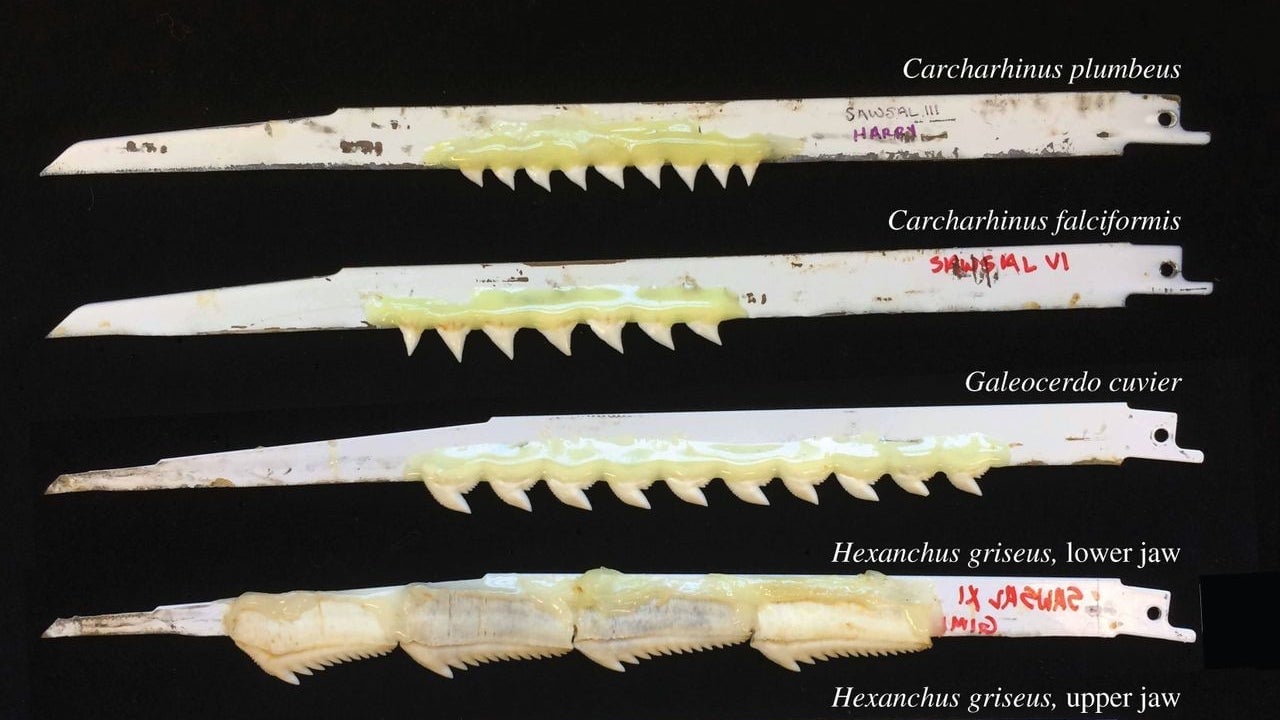
Three blades of each tooth type were used five times on chunks of freshly frozen salmon in order to compare sharpness, and one blade per type was tested multiple times (usually more than 18 times) to see how quickly the teeth get dull.
The winners:
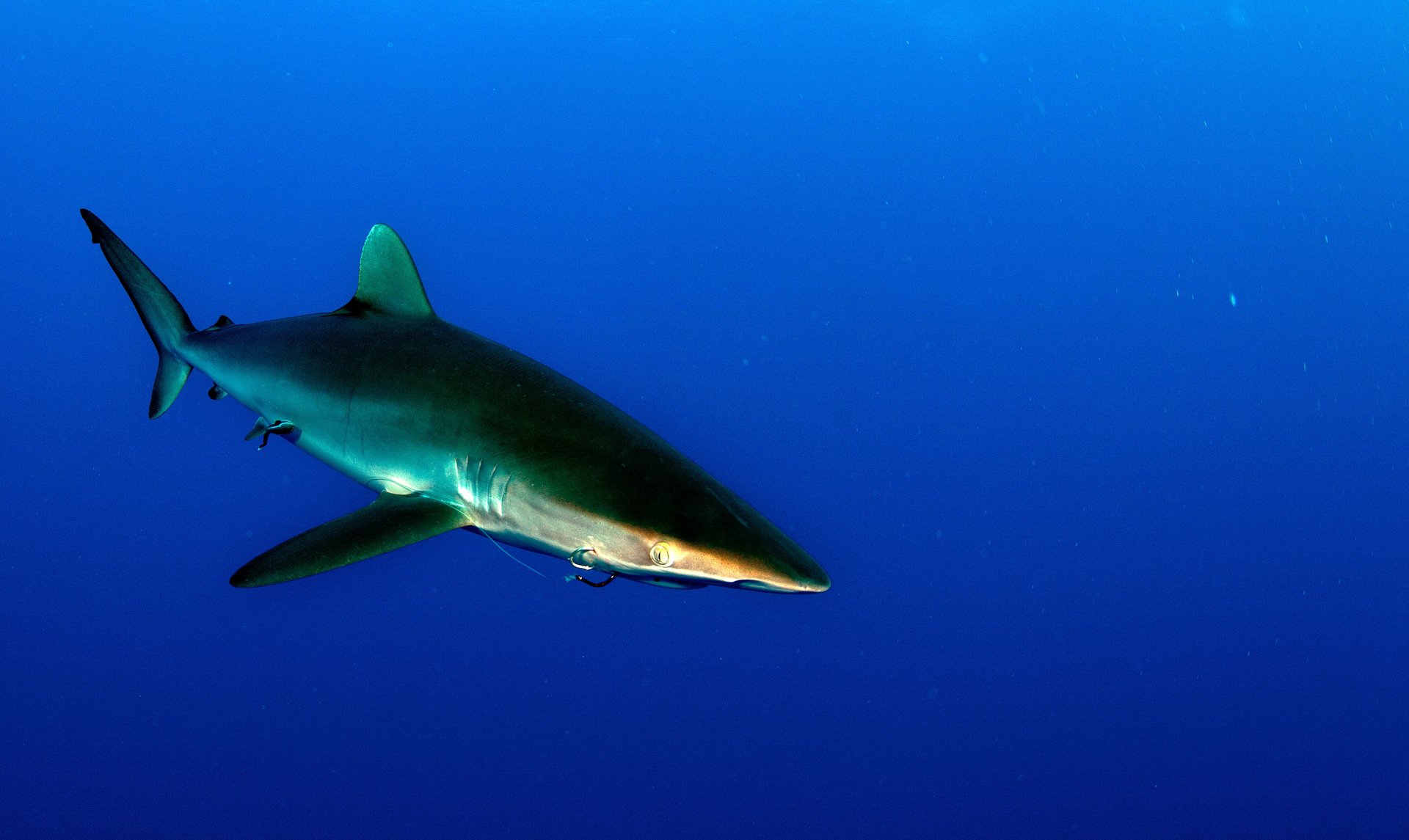
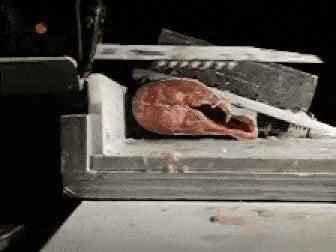
Silky sharks (pictured above) and tiger sharks are the champions when it comes to cutting.
But sharpness comes with a price: their teeth dull rapidly after only a few bites. Feeding behavior and habitat might be responsible for this poor durability; tiger and silky sharks bite their prey to pieces before eating, which means they need razor-sharp teeth to be able to slice through the skin of their prey, like rays, squids and crustaceans. Tiger sharks even devour tougher dinner fare like sea turtles and dugongs. And just like really sharp knives, their teeth dull easily.
The (sort of) loser:
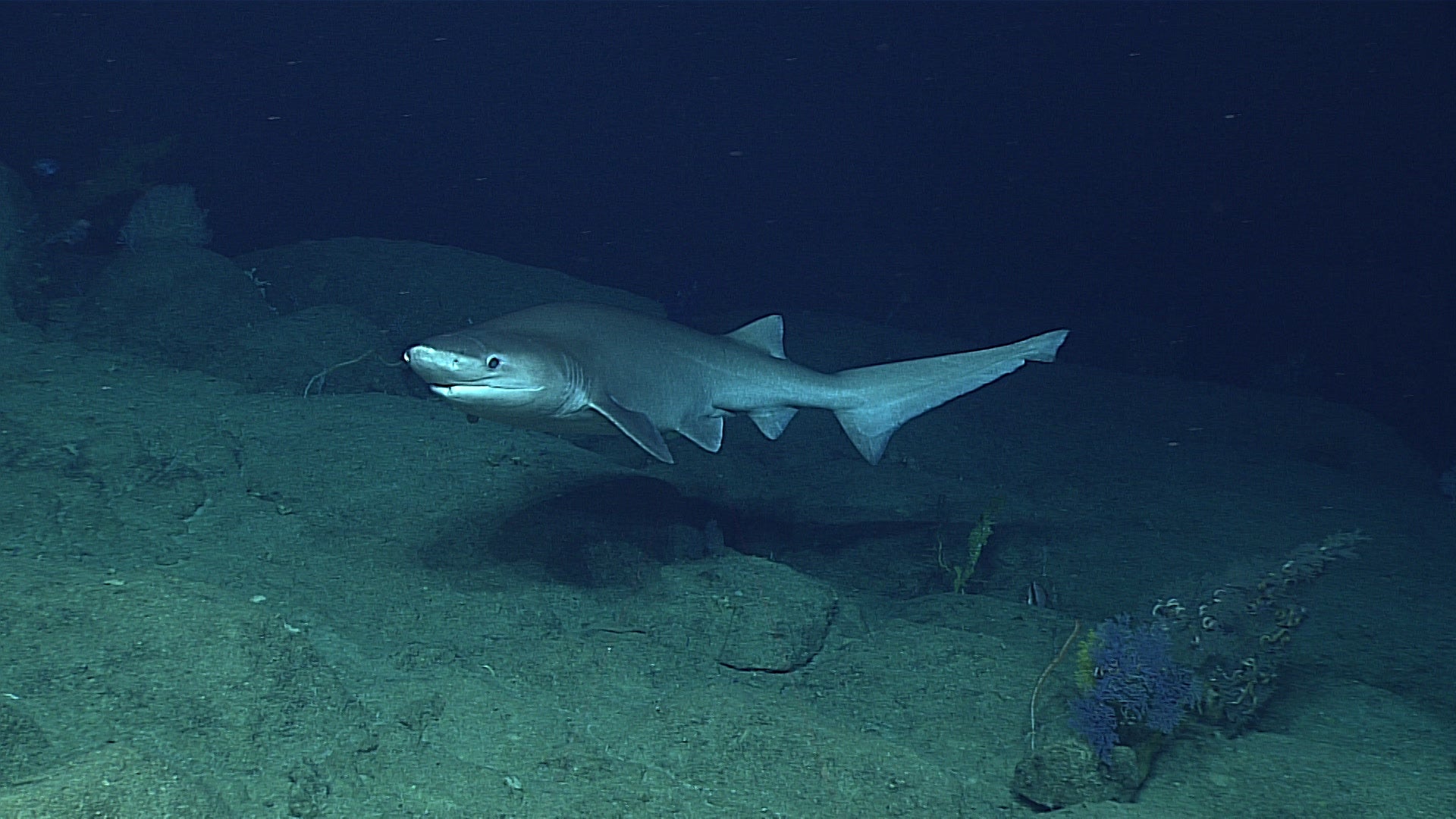

The bluenose sixgill shark might not own the sharpest smile in the sea, but their teeth last longer than those of the other species tested. Little is known about how this deep-sea shark devours its prey. But after testing out its teeth, the researchers now have a theory: the sharks eat their prey whole using their teeth to restrain rather than cut.
The researchers suggest the durability of sixgill shark teeth might indicate slower tooth replacement. Sharks continuously replace their teeth, and some species shed thousands over a lifetime, but replacement rates vary (pdf) among species, slow down with age, and depend on other factors like water temperature and metabolic rates. Sixgill sharks are a cold water species, which means they probably have slower metabolism than the tropical silky or tiger shark—and, therefore, have a relatively slow tooth replacement rate.